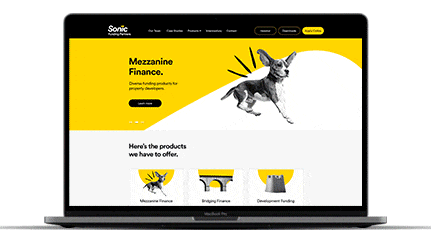Custom Website Design Solutions for Business Websites
Custom Website Design Solutions for Business Websites
Blog Article
Top Tips for Producing an Impactful Website Design That Transforms
To accomplish this, one must take into consideration a range of elements, consisting of recognizing the target audience, prioritizing user experience, and optimizing for mobile platforms. The calculated use of compelling call-to-actions and a well-defined aesthetic pecking order plays a critical function in leading customers via their trip.

Understand Your Target Target Market
Comprehending your target market is fundamental to efficient web site design, as it lays the foundation for developing an interesting user experience. Identifying that your customers are, including their demographics, preferences, and habits, makes it possible for designers to customize the internet site's material, layout, and performance to fulfill details needs.
Conducting extensive marketing research is crucial in this process. Surveys, meetings, and analytics can supply beneficial insights right into user assumptions and pain points. By compiling this information, developers can develop user characters that represent various segments of the target market, ensuring that design decisions are educated and appropriate.
Furthermore, comprehending the target market assists in choosing suitable design aspects such as color design, typography, and images that resonate with users. A website that talks directly to its audience promotes a feeling of link and depend on, motivating longer brows through and greater conversion prices.
Ultimately, a user-centered approach to site layout not only enhances customer contentment yet additionally sustains organization goals by driving interaction and commitment. By prioritizing the requirements and choices of the target market, a site can efficiently serve its purpose and accomplish wanted end results.
Prioritize Customer Experience
To boost the overall performance of a web site, focusing on user experience (UX) is essential (Website Design). A properly designed UX makes sure that visitors can navigate the website effortlessly, discover details promptly, and involve with content meaningfully. This leads to boosted customer complete satisfaction and greater conversion prices
Begin by carrying out user-friendly navigation. Menus needs to be practically structured, permitting customers to locate essential locations of the site with marginal initiative. Uniformity in style elements, such as color pattern and font styles, promotes knowledge, which is essential for keeping individual engagement.
In addition, take into consideration the filling rate of your website. A hold-up of just a couple of secs can lead to significant drop-offs, as users are less likely to wait on a slow-loading web page. Simplifying photos and maximizing code can enhance efficiency and retain visitors.
In addition, clearness in content presentation is essential. Use concise, appealing language and separate message with visuals to improve readability. By focusing on customer experience, you not only create an extra satisfying setting for site visitors yet also enhance your brand's credibility. Eventually, a focus on UX is an investment in the long-lasting success of your website.
Optimize for Mobile Devices
Optimizing for mobile gadgets is critical in today's electronic landscape, where an enhancing variety of customers access web sites via smartphones and tablet computers. A mobile-friendly design not just enhances customer experience but additionally plays a considerable role in improving internet search engine rankings. To attain this, it is necessary to embrace a responsive their website design that automatically readjusts to different display dimensions and orientations.

Loading rate is one more essential element; mobile users are typically less patient and expect rapid access to info. By focusing on mobile optimization, you make certain that your web site continues to be affordable and properly involves a broader target market.
Use Engaging Call-to-Actions
A site's performance often rests on its capacity to guide visitors toward preferred actions, making compelling call-to-actions (CTAs) crucial components of design. CTAs act as the critical points that guide individuals to involve with the website, whether that indicates buying, registering for a newsletter, or downloading a resource.
To create effective CTAs, clearness is critical. Use succinct language that plainly communicates the activity you desire the individual to take. Expressions such as "Get going," "Subscribe Free," Recommended Site or "Store Now" not just communicate seriousness but also eliminate ambiguity. The positioning of CTAs is just as vital; they should be tactically positioned throughout the page to guarantee they are quickly noticeable, especially in high-traffic areas.
In addition, think about making use of directional hints, such as arrows or pictures, to guide customers toward these buttons. By concentrating on these elements, services can substantially enhance user interaction, driving conversions and inevitably achieving their website's goals.
Concentrate On Visual Hierarchy
Reliable website design relies heavily on a well-structured visual hierarchy that guides users through material flawlessly. By organizing aspects in a way that prioritizes information, developers can enhance individual experience and facilitate decision-making. This includes using dimension, color, contrast, and spacing strategically to accentuate the most essential elements of a webpage.
Using bigger fonts for headings and subheadings establishes a clear difference in between various sections, allowing individuals to scan material effortlessly. Additionally, employing different colors for switches and calls-to-action can record user focus and motivate interaction. Whitespace is an additional essential component; it avoids mess and enables users to concentrate on essential messages without interruptions.
Images and graphics need to enhance the message while also adhering to the recognized pecking order, strengthening the total message (Website Design). Uniformity in design elements, such as color pattern and typography, look at these guys further strengthens the visual hierarchy, making navigating user-friendly

Final Thought
To conclude, efficient website design demands a detailed understanding of the target audience, prioritization of individual experience, and mobile optimization. The calculated use compelling call-to-actions and a distinct aesthetic pecking order better enhances user engagement. By carrying out these concepts, internet sites can attain higher conversion rates, ensuring that style aspects not only bring in site visitors yet likewise assist in smooth navigation and communication. Eventually, a well-executed site layout functions as a crucial part in driving individual activities and accomplishing organization objectives.
Report this page